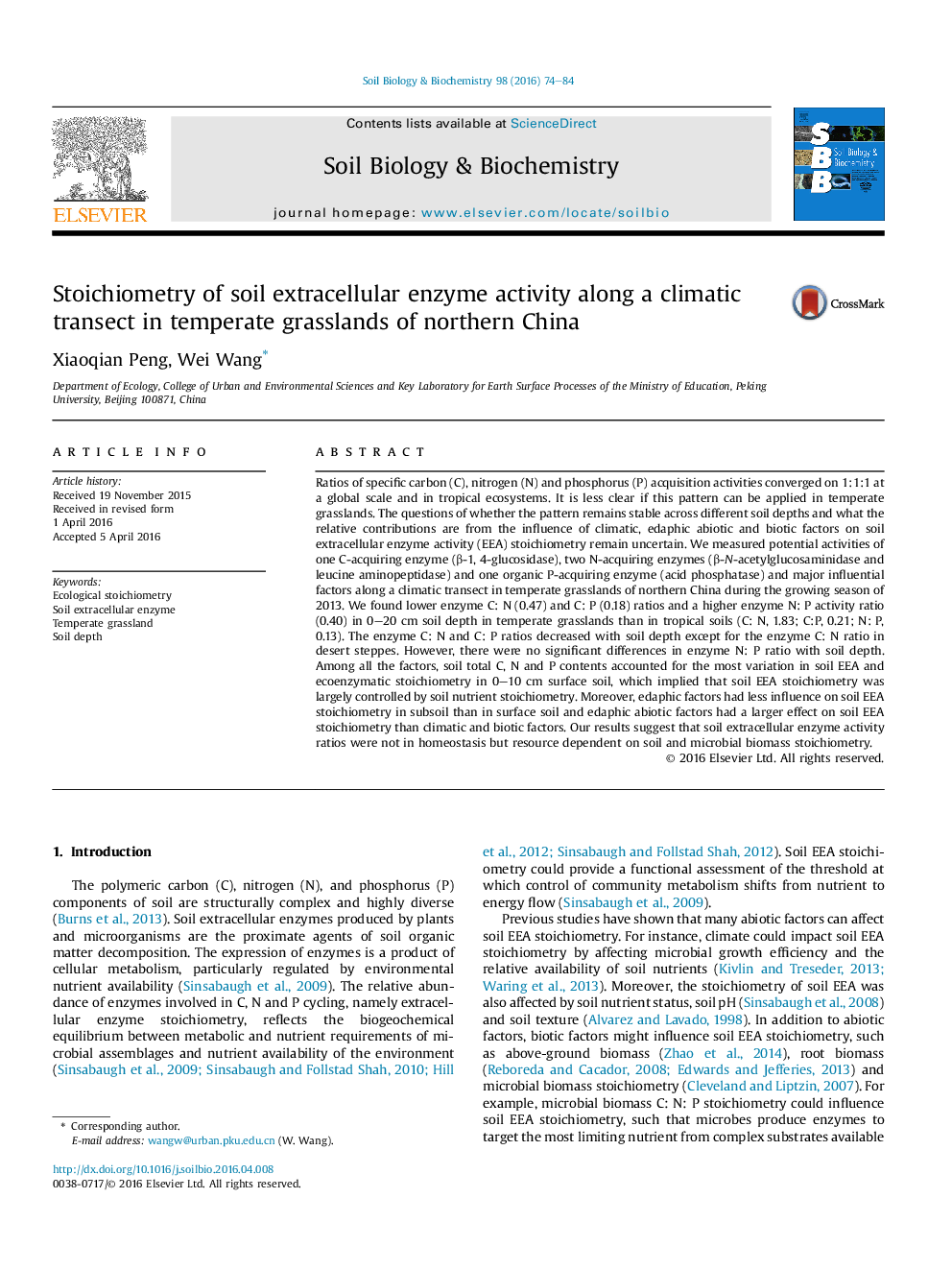| کد مقاله | کد نشریه | سال انتشار | مقاله انگلیسی | نسخه تمام متن |
|---|---|---|---|---|
| 8363533 | 1542586 | 2016 | 11 صفحه PDF | دانلود رایگان |
عنوان انگلیسی مقاله ISI
Stoichiometry of soil extracellular enzyme activity along a climatic transect in temperate grasslands of northern China
ترجمه فارسی عنوان
استئوشیومتری فعالیت آنزیم خارج سلولی در طول یک ترانسکت اقلیمی در مراتع معتدل شمال چین
دانلود مقاله + سفارش ترجمه
دانلود مقاله ISI انگلیسی
رایگان برای ایرانیان
کلمات کلیدی
استوکیومتری اکولوژیکی، آنزیم خارج سلولی خاک، علفزار معطر، عمق خاک،
موضوعات مرتبط
علوم زیستی و بیوفناوری
علوم کشاورزی و بیولوژیک
دانش خاک شناسی
چکیده انگلیسی
Ratios of specific carbon (C), nitrogen (N) and phosphorus (P) acquisition activities converged on 1:1:1 at a global scale and in tropical ecosystems. It is less clear if this pattern can be applied in temperate grasslands. The questions of whether the pattern remains stable across different soil depths and what the relative contributions are from the influence of climatic, edaphic abiotic and biotic factors on soil extracellular enzyme activity (EEA) stoichiometry remain uncertain. We measured potential activities of one C-acquiring enzyme (β-1, 4-glucosidase), two N-acquiring enzymes (β-N-acetylglucosaminidase and leucine aminopeptidase) and one organic P-acquiring enzyme (acid phosphatase) and major influential factors along a climatic transect in temperate grasslands of northern China during the growing season of 2013. We found lower enzyme C: N (0.47) and C: P (0.18) ratios and a higher enzyme N: P activity ratio (0.40) in 0-20 cm soil depth in temperate grasslands than in tropical soils (C: N, 1.83; C:P, 0.21; N: P, 0.13). The enzyme C: N and C: P ratios decreased with soil depth except for the enzyme C: N ratio in desert steppes. However, there were no significant differences in enzyme N: P ratio with soil depth. Among all the factors, soil total C, N and P contents accounted for the most variation in soil EEA and ecoenzymatic stoichiometry in 0-10 cm surface soil, which implied that soil EEA stoichiometry was largely controlled by soil nutrient stoichiometry. Moreover, edaphic factors had less influence on soil EEA stoichiometry in subsoil than in surface soil and edaphic abiotic factors had a larger effect on soil EEA stoichiometry than climatic and biotic factors. Our results suggest that soil extracellular enzyme activity ratios were not in homeostasis but resource dependent on soil and microbial biomass stoichiometry.
ناشر
Database: Elsevier - ScienceDirect (ساینس دایرکت)
Journal: Soil Biology and Biochemistry - Volume 98, July 2016, Pages 74-84
Journal: Soil Biology and Biochemistry - Volume 98, July 2016, Pages 74-84
نویسندگان
Xiaoqian Peng, Wei Wang,
